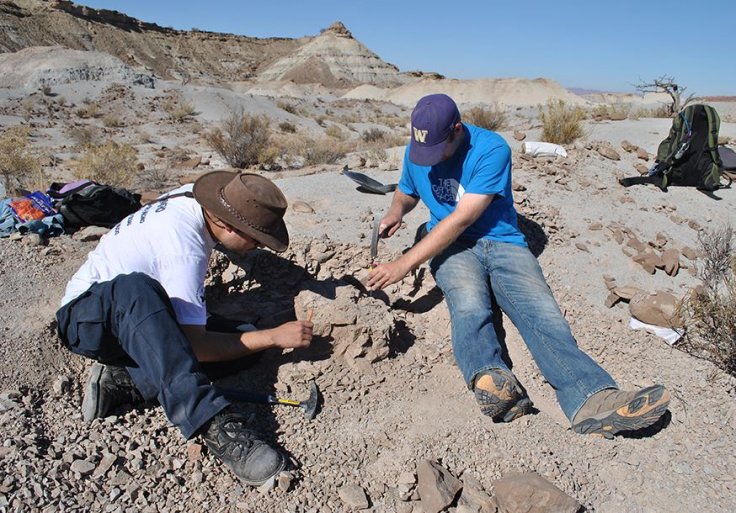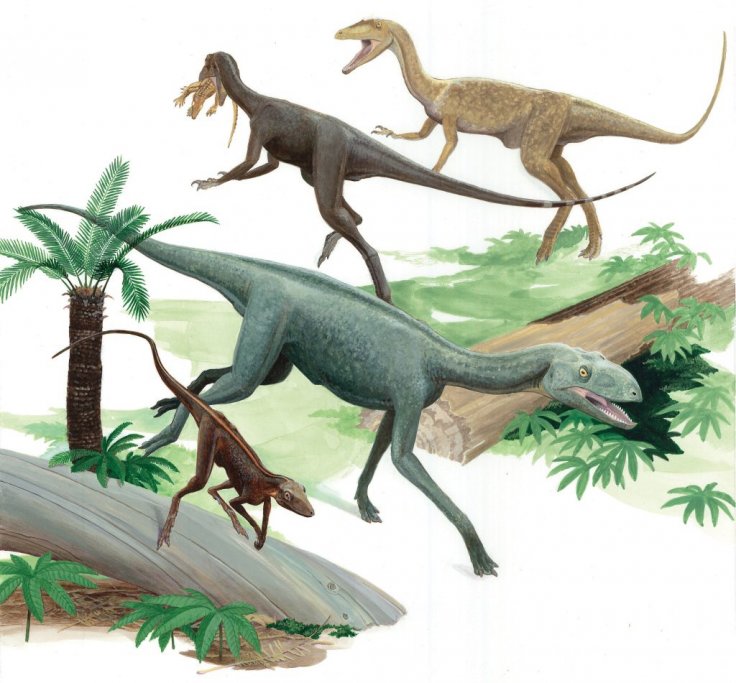Of all the prehistoric creatures that have fascinated mankind since their re-discovery, pterosaurs hold a special place. Along with holding their own during the age of the dinosaurs, their ability of flight precedes the existence of man itself. However, their evolutionary history remains a mystery. Now, a new study reports that a group of flightless "dinosaur precursors" called lagerpetids, are the closest relatives of pterosaurs.
Through the analysis of newly unearthed fossils in Argentina, Brazil, Madagascar, and North America, in recent years, an international team of researchers has posited that lagerpetids are most closely related to pterosaurs than any other group of reptiles. The study helps bridge some of the evolutionary gaps that can help explain the story of how pterosaurs took to the skies.
"Where did pterosaurs come from?' is one of the most outstanding questions in reptile evolution; we think we now have an answer," said Dr. Sterling Nesbitt, co-author of the study, in a statement. The paper was published in the journal Nature.
Mysterious Origins of Pterosaurs

Pterosaurs soared across the ancient skies for around 150 million years as dinosaurs dominated the land. Though they lived alongside each other, they were distinct species of reptiles in themselves. The winged reptilians are believed to have gone extinct about 66 million years ago. While much is known about the anatomy of pterosaurs, the knowledge about their evolution has largely remained a mystery as no acceptable proximate relatives had been identified.
"Pterosaurs appear in the fossil record already showing that they were fully adapted for flight. This means they look really different from any of the other reptile groups at the time. That makes piecing together their evolutionary origins quite difficult," noted Dr. Alan H. Turner, co-author of the study.
Tracing Roots of Pterosaurian Flight

The fossils of lagerpetids have been collected for over a hundred years. For example, the remains—which included a well-preserved partial skull and braincase—of Dromomeron gregorii, a large lagerpetid, were discovered in the 1930s and 1940s in Texas, USA. But it remained poorly identified till 2009. A closer examination of the remnants led scientists to learn that these animals were possibly agile and had a good sense of equilibrium.
As more lagerpetid species were found in South America, researchers could finally establish what exactly they were; wingless and small reptiles that lived across Pangea—a massive supercontinent that encompassed nearly all the continents— during the most of the Triassic period between 237 to 210 million years ago.
Several newly discovered specimens of lagerpetid skulls, forelimbs, and vertebrae, across several countries, along with attempts by five research groups from different countries (involved in the current study) to chart the correct evolutionary history of the pterosaur for over 15 years, led to lagerpetids being studied more closely.

"Any one of these species alone wasn't enough to solve the pterosaur puzzle. We needed to join information from our five different research groups spread across three continents to get all the pieces of this puzzle in place," pointed out Dr. Turner.
Confirming Existence of the Right Ancestor
Paleontologists, who have examined the bones of lagerpetids for a considerable duration, noticed that the dimensions and shape of the bones were similar to both dinosaurs and pterosaurs. However, the unburying of newer and better-preserved fossils, including skulls, exhibited features that were more similar to pterosaurs than dinosaurs.

A baffling finding was that despite being flightless, lagerpetids had already acquired a few of the neuroanatomical features that enabled pterosaurs to fly. Advanced modern technology further revealed that the two creatures possessed uncanny similarities. Employing micro-computed tomographic (µCT), researchers were able to reconstruct lagerpetids' brains and sensory systems encased within their skulls. This revealed that it also matched that of pterosaurs.
"Some of these delicate fossils were collected nearly 80 years ago, and rather than destructively cutting into this first known skull of Dromomeron, we were able to use this technology to carefully reconstruct the brain and inner ear anatomy of these small fossils to help determine the early relatives of pterosaurs," highlighted Dr. Michelle Stocker, co-author of the study.
Fillings Gaps In Evolutionary History
The current study will help piece the evolutionary and gaps that exist between pterosaurs and other reptilians. Due to the lack of any known relatives, the transformation of certain reptiles was attributed to rapid evolution. However, the emergence of lagerpetids as their ancestors serves as evidence for the systematic evolution of pterosaurs.

"Flight is such a fascinating behavior, and it evolved multiple times during Earth's history. Proposing a new hypothesis of their relationships with other extinct animals is a major step forward in understanding the origins of pterosaur flight," noted Dr. Serjoscha W. Evers, co-author of the study.
However, some questions continue to remain. For starters, how did the wings come to be? "We are still missing lots of information about the earliest pterosaurs, and we still don't know how their skeletons transformed into an animal that was capable of flight," emphasized Dr. Nesbitt. The authors intend to study other animals the appeared during the Triassic Period and collect more fossils to solve the puzzle of high-flying pterosaurs.









